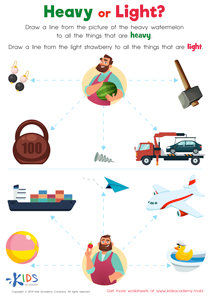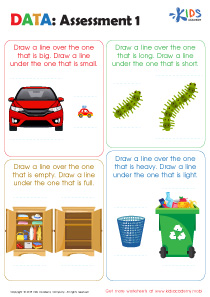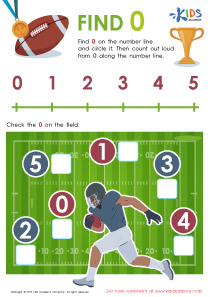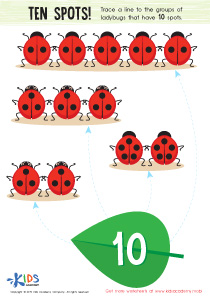Normal Time Worksheets for Ages 6-8
5 filtered results
-
From - To
Welcome to our Normal Time Worksheets for Ages 6-8! These engaging worksheets are designed to help young learners grasp the concept of telling time. With colorful illustrations and age-appropriate activities, children will practice identifying clock faces, understanding hours and minutes, and enhancing their time-telling skills. Our diverse set of worksheets encourages both practice and fun, catering to different learning styles. Whether in the classroom or at home, these resources support your child's math development in a playful way. Explore our collection today and watch your little ones become confident in telling time! Perfect for teachers and parents alike!
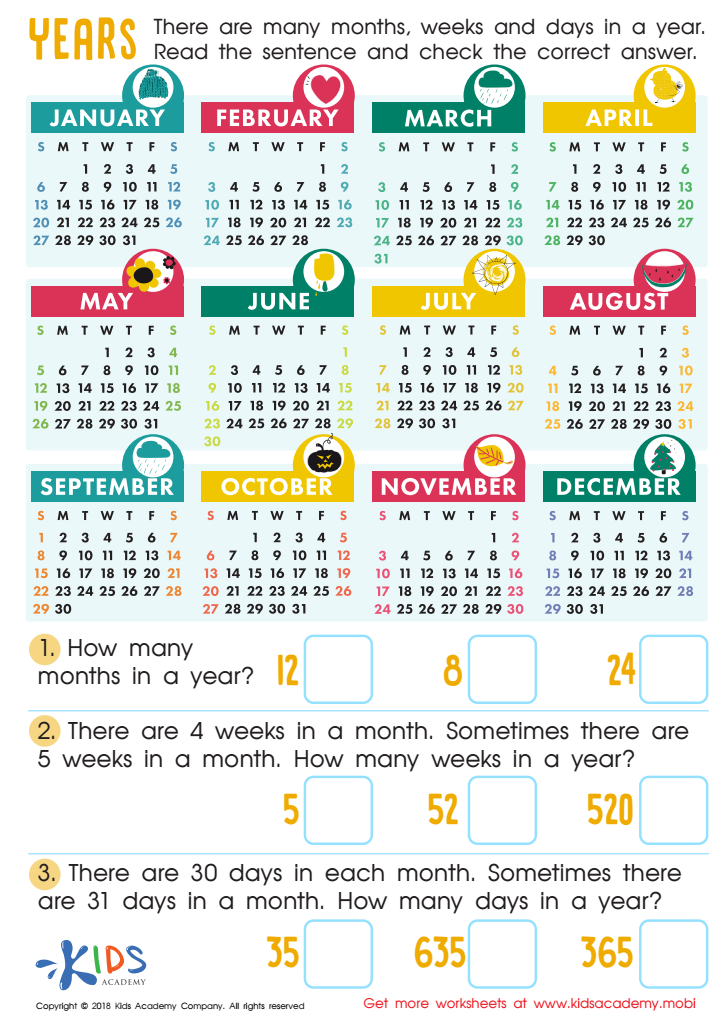

Years Worksheet
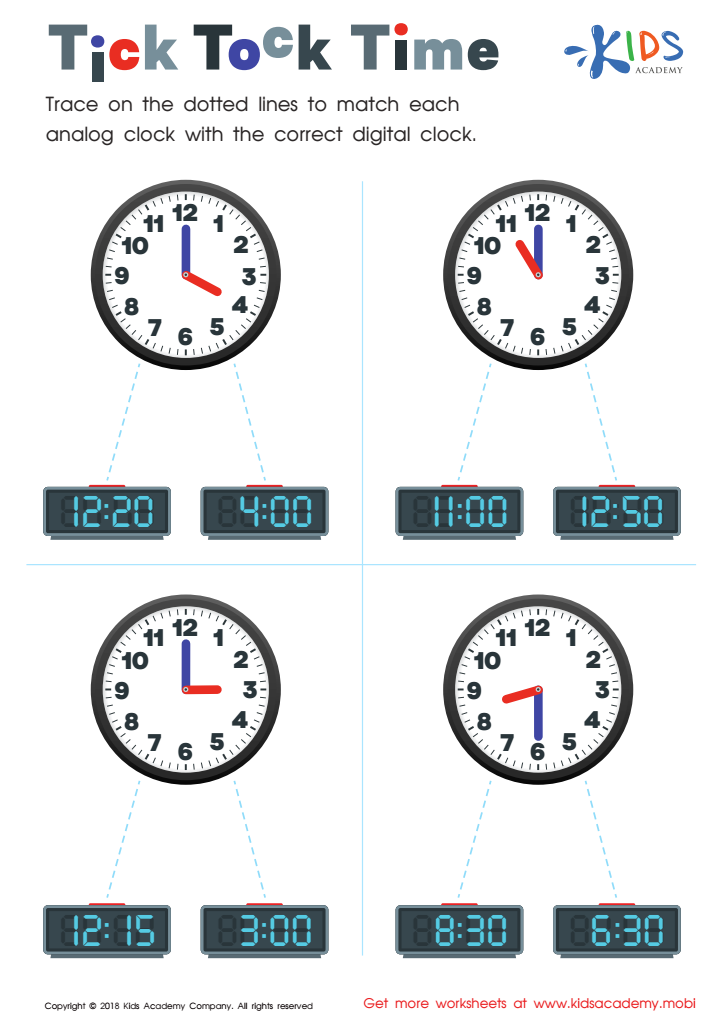

Tick Tock Time Worksheet
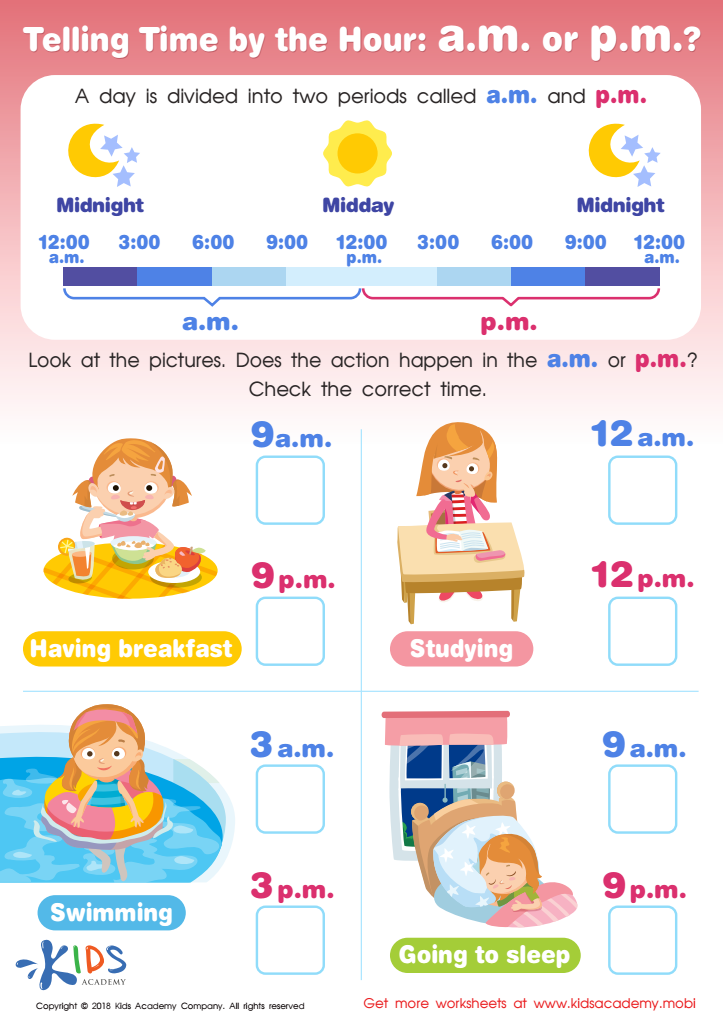

Tilling Time by the Hour: a.m. or p.m.? Worksheet
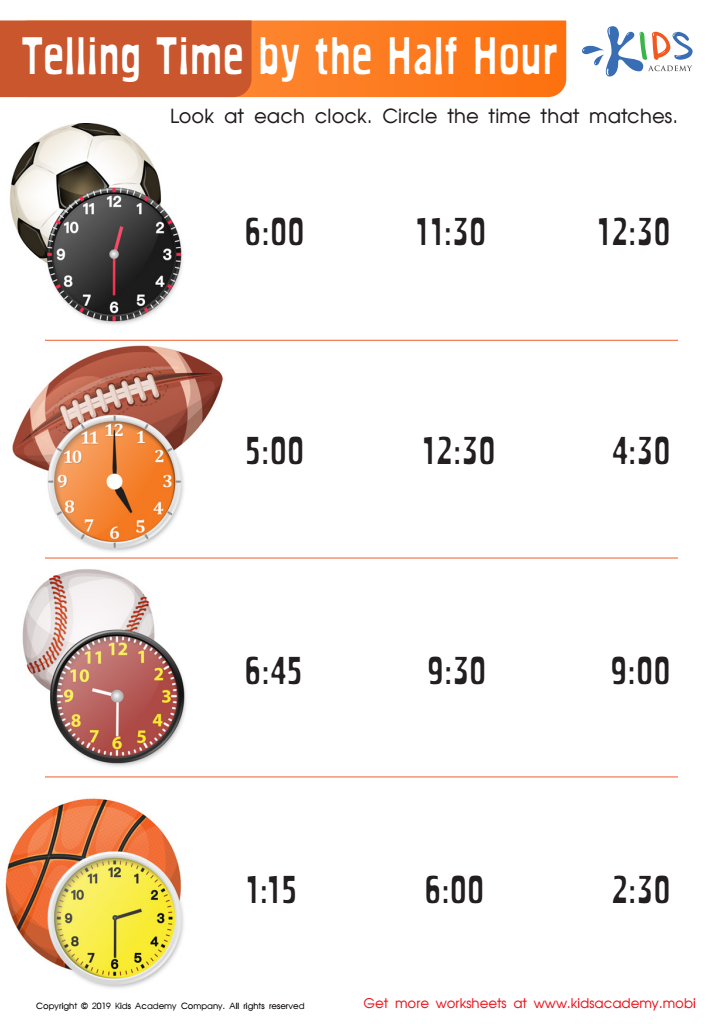

Telling Time by the Half Hour Worksheet
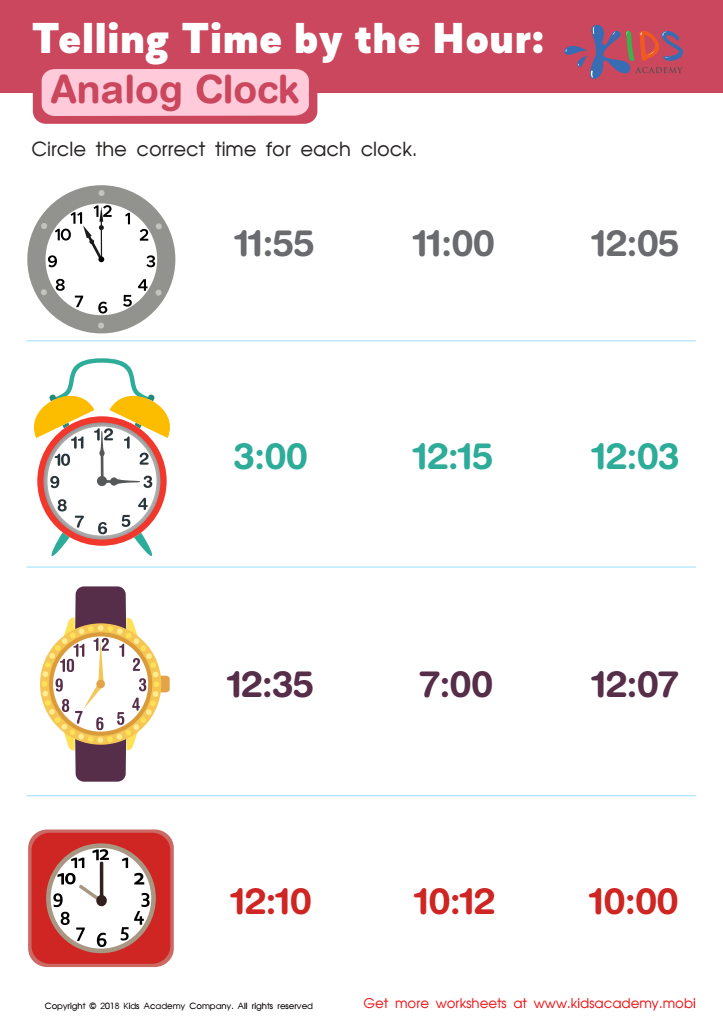

Telling Time by the Hour: Analog Clock Worksheet
Normal Time is particularly important for children aged 6-8, as this stage is critical for cognitive and social development. During these years, children begin to navigate a structured environment where they simultaneously learn academic skills and start to grasp broader concepts of time and organization. Understanding Normal Time helps foster routines, enabling children to feel secure and family bonds to strengthen through consistent scheduling.
For parents and teachers, grasping the concept of Normal Time ensures that children learn essential life skills, such as responsibility and time management. Mastery of time-related skills, including reading clocks and estimating durations, enhances their ability to plan their activities and manage their own time effectively. Additionally, Time education fosters social interactions—children need to understand shared timings for group activities, playdates, and school schedules.
By focusing on Normal Time, educators can design engaging lessons around it, incorporating games and activities that intertwine fun with learning. Parental involvement is equally crucial; parents can reinforce these lessons at home through discussions around daily routines or collaborative planning of activities. Overall, timely awareness is foundational for building organizational skills that contribute to students' success in current and future academic pursuits.
 Assign to My Students
Assign to My Students













